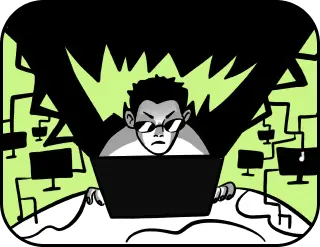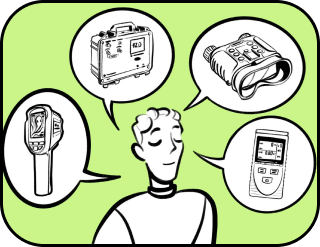How to overcome VR addiction: stories and solutions
With each passing day, virtual reality captures more attention and is becoming a common way to interact with the world. And it’s understandable: real life is becoming more challenging – economic problems, social changes, and global issues create uncertainty about the present and future. The recent pandemic and subsequent isolation have fueled interest in VR as a means of communication and entertainment, offering an escape to a place where everything is calm. A headset on, and suddenly, you’re in a new dimension – a world of fantasies and dreams.
VR is becoming increasingly accessible, and more people are diving into this exciting new world, often without fully understanding that this novel technology brings certain risks. How can we use VR so that it remains a tool, not a replacement for real life?
To answer this question, we turned to real-life stories of individuals, and here’s what we discovered.
Maria had a lifelong fear of public speaking. Each time she had to speak in front of an audience, she felt intense anxiety, making her presentations unsuccessful. Concerned for her, her teacher suggested using VR to practice communication skills, and Maria began “performing” in front of a virtual audience in a popular VRChat application, allowing her to adapt to the feeling of nervousness in a safe environment. After several months of VR training, her confidence grew, and she could speak without trembling or tension. She continued practicing in real life as well, and was no longer as afraid of the audience. Thanks to VR, she learned to manage her anxiety.
John moved to a new city. He longed for social interaction, but his busy schedule and new social environment made it hard to make friends, so he decided to try VR platforms for virtual meetings and events. On one of these platforms, John joined an interest group where people gathered to discuss books, movies, and games. Through VR, he was able to meet new people without leaving his home.
Dexter had to limit physical activities for a long time in the real world, so he began doing muscle rehabilitation exercises in virtual reality. VR helped him feel progress and build confidence, and eventually, he returned to full workouts. He enjoyed the freedom VR provided but didn’t let it replace real training, and as soon as possible, returned to his usual physical routine.
Thanks to VR, Anton learned Chinese, and Max traveled to every country in the world.
Sounds perfect, doesn’t it? In these stories, everyone is happy. Forget reality and go buy a VR headset – all your problems will be solved by a processor and lenses.
But every coin has two sides, and VR is no exception. This technology indeed opens up many possibilities, but as it becomes more widespread, psychologists are raising alarms, warning of addiction risks and the potential for withdrawal from real life.
Emma used VR to cope with social anxiety, preferring to spend time in virtual spaces where she didn’t have to meet people face-to-face. At first, this virtual environment helped her build confidence, but after some time, Emma began to use VR as a protective shell, choosing virtual interactions over real ones. As a result, it became even harder for her to leave the house and face the real world. She withdrew into the virtual world, gradually distancing herself from close friends and family.
Imran used VR for gaming and leisure, seeking to avoid boring tasks. Gradually, real life started to fade into the background, and VR became a more comfortable reality for him. Imran began immersing himself in the virtual world, ignoring important responsibilities and detaching from goals he had set for himself some time ago. In the end, he had to seek professional help to find his place in reality again.
Nolan found solace in VR travel, but the more he engaged in virtual tours, the less inclined he was toward real travel and genuine experiences. Over time, he felt that actual trips became less exciting; he was content with virtual experiences that required neither effort nor expenses.
Anna decided to try VR meditation to transport herself to peaceful places, like a virtual tropical beach or mountain surrounded by green forests, during stressful moments. However, after a few months of using VR meditation, Anna began retreating into virtual calm not only at work but also at home during periods of tension or boredom. It became harder for her to relax in her regular life, as her brain had begun associating relaxation only with VR. She felt that she was losing her connection to reality, gradually sinking deeper into the virtual world.
So, what should you do if reality becomes dull and virtual reality tempts you with endless variety?
Take a breath. And try to understand the reason behind your escape from reality.
We all subconsciously want to escape discomfort, pain, and challenges. Our brains have learned to do so because it helps us forget about problems. But at the same time, we are forced to spend our lives running from difficulties and constantly distracting ourselves to avoid dealing with them. This means we’re allowing fear and anxiety to control us. We’re like a small child who doesn’t want to make an effort and only wants carefree days.
As a result, we avoid important tasks or put them off until the last minute, then work under stress, only to escape from ourselves once more. In the end, we still have to deal with the problems, but by then, they have usually grown to monumental proportions. And all we can do is keep running.
Embrace Challenges
According to the acceptance method developed by Leo Babauta, it is better to fully recognize your problems rather than avoid them. Try doing this, and you may realize that these issues aren’t as frightening as they seem.
1. Ask yourself, “What am I doing right now?” Set a few reminders throughout the day or leave notes for yourself to remember what you’re engaged in.
Your answers may be quite simple, like “Scrolling Facebook,” “Talking on the phone,” or “Looking out the window.” The main goal is to train yourself to be mindful.
2. Then, ask yourself, “What am I avoiding?” When we face something difficult or unpleasant, we automatically switch to something else, avoiding these thoughts or tasks without even realizing it.
So try to understand what you’re avoiding: it could be fear, a challenging task, an unpleasant emotion, discomfort, or simply being in the present moment.
3. Accept the feeling, whatever it is. Think not about your attitude toward it, but about the physical sensation itself. You’ll likely notice that it’s not as frightening as you thought. Try to stay with this feeling for a while.
4. Take action. Once you’ve acknowledged your problem and realized it’s not as bad as it initially seemed, you can respond as an adult rather than as a child: you’ll decide how to tackle it.
Of course, this method won’t solve all your problems. But it will help you deal with discomfort rather than avoid it, as most people do. You’ll procrastinate less and learn to live in the present. Naturally, this won’t happen overnight. It will take some time before it becomes a habit.
After all, we’re living in the safest, most prosperous, healthy, and abundant time in human history. Compared to past decades, crime is decreasing, human rights are better protected, and overall comfort is only increasing. There will always be things we cannot change. So is it worth avoiding them?
This week will end, followed by another, and then the next. In a few weeks, the things that once made your heart race will seem naive, amusing, and far less important.

Alex faced challenges studying anatomy, as conventional textbooks and two-dimensional diagrams were hard to grasp. Using VR, he was able to practice with 3D models of the human body, studying the structure of internal organs within the context of an actual body. Virtual lessons allowed Alex to understand complex topics better and prepare for real-life situations, and VR became his way to overcome academic obstacles.
Pavel works on designing complex machinery. VR helps him detect major flaws at the assembly stage, recreating three-dimensional models of any project and testing them in a virtual environment.
Large companies with many remote employees are gradually adopting VR platforms for virtual meetings and conferences. Colleagues interact in a 3D office, discuss projects, and exchange ideas. Virtual presence has shown to create a sense of team unity and makes interactions livelier compared to regular video calls.
Nicole uses VR to spark her students’ interest in her lessons. With VR, students visit ancient cities, immersing themselves in the daily life and culture of those times. As a result, her classes have become more engaging, and students retain the material better. For Nicole, VR has become not only a teaching tool but a way to instill a love for her subject.
Undoubtedly, using VR for solving everyday tasks is a breakthrough. There’s no longer a need for textbooks — anatomy can be studied with realistic 3D models, stress can be relieved in just a few minutes in a virtual tropical paradise, and design errors can be detected long before production. Life becomes simpler and more convenient. However, experts warn that excessive use of VR may disrupt usual cognitive processes, reduce emotional attachment to reality, and lead to psychological dependence.
Ekaterina, an HR manager, noticed that when she started using VR for virtual meetings, the team became less engaged. Participants often disconnected, creating the feeling that they were working alone with avatars. Team unity faded, and issues remained unresolved.
Anastasia, who introduced VR in her teaching, found that students became less interested in real-life lessons. They began to long for virtual journeys and lost motivation to study traditional material, which impacted their performance.
So, what do you do if virtual reality has become that very assistant that you can’t live without but also can’t live with?
Take a breath. And start replacing one craving with another.
Each of us has five senses — hearing, sight, smell, taste, and touch. Scientists conducted a series of studies and found that if an addiction appears in life, it is usually tied to one of these senses.
Therefore, if you’ve noticed that it’s hard to do without realistic 3D models, but with them, you lose the ability to think on a large scale, try temporarily turning off one of your senses. For example, try modeling with your eyes closed or spend a few days in complete silence.
Scientists claim that, in such cases, the brain takes the path of least resistance and has to relearn how to solve tasks. First, those that help compensate for the “disabled” sense, and then those you’re used to solving on your own. Life will seem entirely different.
After all, real-life learning, entertainment, and travel provide a rich spectrum of emotions that the virtual world has yet to replicate. Students who mix chemicals in a lab for the first time feel a real adrenaline rush, as if they’re alchemists creating potions in Hogwarts. Aspiring chefs joyfully chop vegetables in the kitchen, cursing stubborn carrots and celebrating every successful cut under their instructor’s watchful eye. Friends cheer as they ascend the peak of a roller coaster in an amusement park, each twist and turn bringing a whirlwind of emotions, with joy, fear, and laughter intertwining. Travel brings unique experiences — a hike in the mountains brings excitement and surprises, and a new breathtaking view from the window remains a beautiful memory. Every real-life meeting, every step leaves a mark that cannot be erased. Even every problem that can drive anyone mad brings more joy and satisfaction than burying your head in the sand — or in a VR headset.
Remember, no technology can ever replace real life and the freedom of being “here and now.” And that’s enough of the internet for today.

The micro world makes particles dance to the melody of probability.
Thank you!




